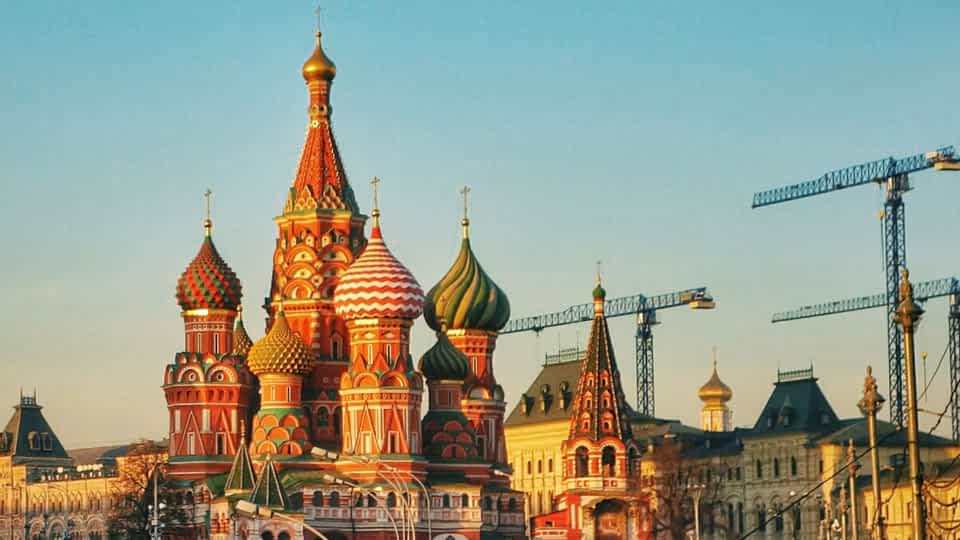2016 Investment Outlook
January 08, 2016
Read Time 6 MIN
Special Note on Recent Market Activity:
Since the filming of this video at yearend 2015, we have seen some notable market moves. In the past week, we’ve experienced several “OMG days” as China’s stock market has taken a dramatic tumble. Although this has created a lot of negativity and confusion regarding China, particularly in the media, our long-term outlook for China remains positive.
Long-Term Commodities Momentum Suggests a Bottom in Q1
TOM BUTCHER: Jan, let’s discuss your outlook for 2016. First: Commodities.
JAN VAN ECK: 2015 was an awful year for commodities. It was really the culmination of a decade-long bull market, and this has ended and brought commodity prices and the prices of commodity equities really to where they were before 2000-2001, before the commodities bull market started. I think the difficulty for markets -- and this has really affected psychology over the last few quarters-- is that the supply decreases that are inevitable with the slowdown have not yet hit where demand is. There will be a period when supply and demand will meet. Maybe it's in 2016 for some commodities; maybe early 2017 for other commodities. But investors just hate this current period of uncertainty. There has also been a big credit crunch that has impacted commodity producers, from Petrobras to Glencore, to the MLP [master limited partnership] sector.
It is really difficult right now to look at all the fundamentals and figure out what's going on. We know we're in a bear market, and we know there will be a turn. The typical commodity cycle does take about 18 months, and that would mean the current cycle should end in the first quarter of 2016. We believe that is a good a guide as to when we are likely to see the bottom of this commodity cycle.
Opportunities for 2016: Growth Spots in Emerging Markets
BUTCHER: If there's uncertainty in commodities, what about the emerging markets?
VAN ECK: Some countries are affected much more than others by commodities among the emerging markets. It's really funny because we've read so much this year about China and the stock market fall, but really, the country that had the most difficulty in 2015 was Brazil. Brazil was impacted by the fall in commodities, the over-leveraged commodities in its economy, political uncertainty, corruption, and a whole number of different factors that has led to a fall in not only Brazil’s financial markets, but also in its currency. We are likely to enter 2016 with a lot of uncertainty around Brazil.
Everyone knows now that China’s growth is slowing down. 2015 was a hugely pivotal year for China, in which it really entered the world's capital markets. What I like to say is that 2001 and 2015 were the most important years for China in the last 30 years. In 2001, China entered the world trading system and trade interaction with other countries exploded. Last year, 2015, it became clear that there was enough money moving in and out of China, that China couldn't separate its interest rate from its exchange rate. Given this, we know that China’s interest rate cycle is on a downward trajectory. That means China’s currency will probably weaken in 2016. We just don't think it'll be too chaotic. Perhaps something on the order of 10% to 15%, and it's already started depreciating now.
For emerging markets, we like to focus on where there are growth spots, and there are a number of sectors and countries that are doing quite well in the emerging markets in this slow-growth world.
BUTCHER: Can you give me two examples of such growth spots?
VAN ECK: I think in 2016 and looking forward, that global growth is not going to accelerate, as we have said before. Monetary and fiscal policies in the U.S. are on the margin contractionary and will likely stay generally the same in 2016, and the same structural issues that the developed world has will likely continue to exist. Growth in the emerging markets is not even. But there are several industries that are growing relatively aggressively. There are growth spots that we are excited about in 2016. I will identify a couple of examples that represent trends that are less mainstream. Everyone knows about the more mainstream trends, like the internet consumption in China through Alibaba and other internet players. First, Turkey created some tax incentives for savings plans, like a 401(k) savings plan we have here in the United States. And that growth has been 20% to 40% a year, because it's just taking off. Mobile payments in Africa are another trend. With several emerging markets, payment systems have leap frogged what we've done here in the United States, and people make most payments and transactions using mobile phones, and cell phone penetration in Africa is relatively high. A third example would be private banking in India, which is just another secular trend where the financial sector is reforming, and private players appear to be benefiting. Again, it has been a 20% growth industry. These are the types of emerging markets trends and sectors that investors can take advantage of, but are difficult to access. They are not always available through a mainstream index, so accessing them generally favors an active management approach.
Credit Markets are Historically Cheap and a New Asset Class Provides Opportunity
BUTCHER: Can you talk about fixed income investing?
VAN ECK: There are two points that we would make about fixed income investing. First, spreads have increased quite a bit over the last year. In fact, interest rate spreads for corporate debt are as high as they've really been over the last 15 years, putting aside the credit crunch of 2008-2009. This means you're getting paid a lot to invest in high-yield debt, in MLPs, and other types of fixed-income closed-end funds. Is this the time to buy? Over the next 12 months or so, we think it could be pretty interesting to buy fixed income. That's the first point. People talk about the rate increases, but really, spreads have been widening over the course of the year, and so we believe that makes fixed income more attractive.
Secondly, there is this new asset class that we're very interested in that accesses loans that are originated from online lending platforms like Lending Club and Prosper. They're called marketplace loans or online loans. And what this asset class does is allow investors, for the first time, to invest in consumer credit. If you think about it, there is bank lending, company bonds, and the bond market. Individual investors have always been able to invest in company bonds. But we've never been able to invest directly in the debt of individuals. It's always been through financial institutions. But now, consumer debt can be invested in through online platforms. To me, this represents a new asset class, and it's a trillion-dollar asset class, which is huge. We feel The American consumer is in pretty good shape, and currently that the asset class is relatively attractive.
BUTCHER: Wonderful, thank you.
Related Insights
April 17, 2024



